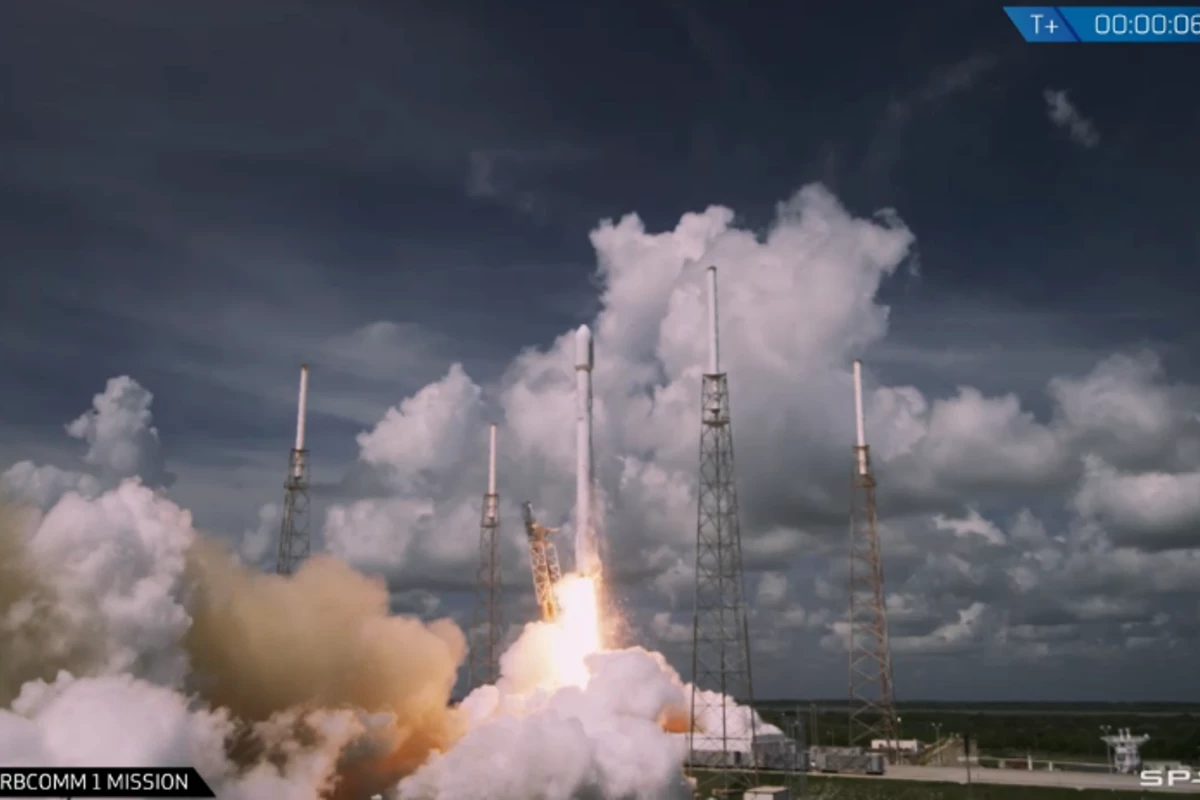SpaceX launched a Falcon 9 rocket today, carrying six Orbcomm OG2 communication satellites in the second mission flight of a Falcon booster equipped with landing legs. At 11:15 am EDT, the Falcon 9 lifted off from Space Launch Complex 40 at Cape Canaveral Air Force Station, Florida. The launch comes on the heels of three aborted attempts. The first, on May 10, was cancelled due to a helium leak; a second on June 20, was scratched because of a depressurization alarm in the second stage; and a third, on June 21, was called off because of bad weather.
The OG2 mission is the first set of a series of 17 satellites that will replace the first generation of Orbcomm’s constellation of communications satellites. Built by the Sierra Nevada Corporation and weighing about 170 kg (375 lb), the satellites are reportedly larger and more efficient than previous Orbcomm spacecraft, and are capable of faster data feeds and can cover higher latitudes on the Earth’s surface. In addition, they can be used for tracking Automatic Identification System (AIS)-equipped ships, allowing their owners and emergency services to keep tabs on them.
Powered by nine Merlin engines burning 850,000 lb (386,000 kg) of kerosene and oxygen, the Falcon 9 built up 1.3 million lb (589,670 kg) of thrust at lift-off as the rocket passed through the area of maximum aerodynamic pressure (max Q).
At three minutes, the first-stage engines shut down, after which the second stage separated and fired eight seconds later. As it did so, the aerodynamic fairing opened and fell away. At 6 minutes and 46 seconds, the second stage cut off and coasted until the satellites separated at the 15-minute mark.
After separation, SpaceX conducted its second during-mission powered landing test of the first stage booster on the surface of the Atlantic ocean. According to SpaceX founder Elon Musk, the leg deployment and landing burn were successful, but the first stage lost bodily integrity during the maneuver. SpaceX is studying telemetry to determine if this was due to the landing or the booster tipping over in the water.
The OG2 satellites are now on their way to a 750 x 615 km (466 x 382 mi) elliptical low-Earth orbit.
Source: SpaceX





